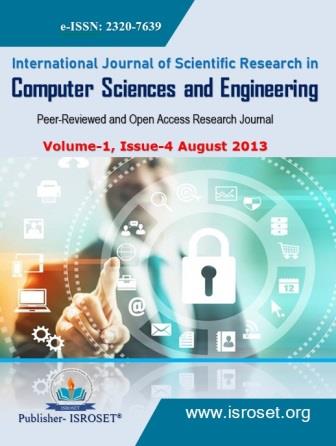Analysis of Current Control Techniques on Bridgeless Interleaved Boost DC-DC Converter to Improve Power Quality
Keywords:
Bridgeless IBC, THD, Power Factor &, Current Control TechniquesAbstract
This paper presents the comparison of various current control techniques employed for a bridgeless interleaved boost converter for improving the power quality. The major control strategies discussed in this paper are: peak current, average current mode and borderline current control. These strategies are implemented in MATLAB/SIMULINK and the performance of the proposed converter is compared under open loop and closed loop operation. From the results, the input current waveform was close to sinusoidal implying high power factor and reduced harmonics for borderline control.
References
Balogh.L and Redl.R, Power-factor correction with interleaved boost converters in continuous-inductor- current mode, Applied Power Electronics Conference and Exposition (APEC), Eighth Annual Conference Proceedings, Print ISBN: 0-7803-0983-9, pp. 168 – 174, 1993.
Chen Zhou and Milan M. Jovanovic , “Design Trade offs in Continuous Current-Mode Controlled Boost Power-Factor Correction Circuits - Seventh International High Frequency Power Conversion (HFPC) Conf., San Diego, CA, pp. 209-220, 2011.
Hasaneen B.M. and Mohammed, A.A.E., Design and simulation of DC/DC boost converter, 12th International Middle-East Power System Conference, pp.335 – 340, 2008.
Kurma Sai Mallika , Topological Issues In Single Phase Power Factor Correction – Department of Electrical Engineering National Institute of Technology, Rourkela-769008, 2007.
Lai, J. S., , “Design consideration for Power Factor Correction Boost converter operating at the Boundary of Continuous Conduction mode and Discontinuous Conduction mode - Proc. of IEEE Applied Power Electronics Conference(APEC) ,pp. 267-273, 1993.
Lee . P, Lee . Y, D.K.W. Cheng and X.Liu,”Steady-state analysis of an interleaved boost converter with coupled inductors - IEEE Trans. Industrial Electronics”, 2000, pp. 787–79.
Jian Li , Current-Mode Control: Modelling and its Digital Application- Dissertation, Virginia Polytechnic Institute and State University, Blacksburg, Virginia, 2009.
Kamran Rezaei, “A Control Scheme for an AC-DC Single-Stage Buck-Boost PFC Converter with Improved Output Ripple Reduction”, Dissertation, The School of Graduate and Postdoctoral Studies, University of Western Ontario - Electronic Thesis and Dissertation, 2012.
J. P Gegner, C. Q. Lee, Linear Peak Current Mode Control: A Simple Active Power Factor Correction Control Technique for Continuous Conduction Mode, PESC Conf.Proc., 1996, pp. 196-202.
J. R. Rajagopalan, P. Nara, F. C. Lee, A generalized Technique for Derivation of Average Current Mode Control Laws for Power Factor Correction without Input Voltage sensing, APEC Conf. Proc., 1997,,pp. 81-87.
Rossetto. L., Spiazzi G., Tenti P., “Control techniques for power factor correction converters”, Power Electronics and Motion Control (PEMC), September, pp. 1310-1318, 1994.
Santosh A and Shivashankar Tallada , Simulation Of High-Efficiency AC/DC Converter For Power Factor Correction - International Journal of Engineering Research and Applications(IJERA)ISSN:2248-9622, Vol. 2, Issue4, pp.2043-2050, 2012.
Downloads
Published
How to Cite
Issue
Section
License

This work is licensed under a Creative Commons Attribution 4.0 International License.
Authors contributing to this journal agree to publish their articles under the Creative Commons Attribution 4.0 International License, allowing third parties to share their work (copy, distribute, transmit) and to adapt it, under the condition that the authors are given credit and that in the event of reuse or distribution, the terms of this license are made clear.







